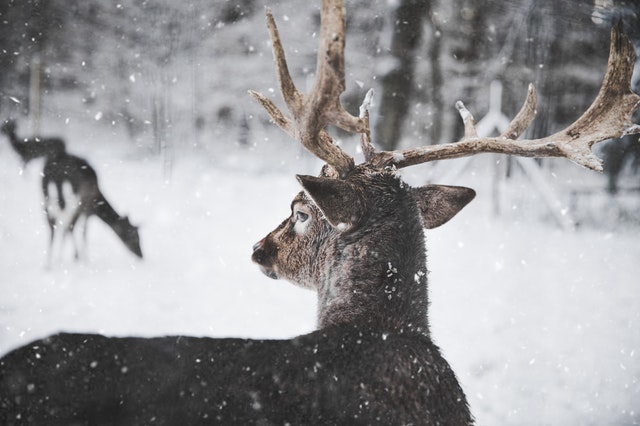Winter season In India
Table of Contents
Winter Season is the coldest season of the year, between autumn and spring; the name comes from an old Germanic word that means “time of water” and refers to the rain and snow of winter in middle and high latitudes. In the Northern Hemisphere, it is commonly regarded as extending from the winter solstice (year’s shortest day), December 21 or 22, to the vernal equinox (day and night equal in length), March 20 or 21, and in the Southern Hemisphere from June 21 or 22 to September 22 or 23. The low temperatures associated with winter occur only in middle and high latitudes; in equatorial regions, temperatures are almost uniformly high throughout the year.
The concept of winter in European languages is associated with the season of dormancy, particularly in relation to crops; some plants die, leaving their seeds, and others merely cease growth until spring. Many animals also become dormant, especially those that hibernate; numerous insects die.
Winter in the hemispheres
People living in the Northern Hemisphere are more likely to experience a colder winter than those in the Southern Hemisphere. In fact, all of the coldest countries in the world are located in the Northern Hemisphere. These include Kazakhstan, Russia, Greenland, Canada, the United States, Iceland, Finland, Estonia, and Mongolia, according to Earth & World. (Though not a country, Antarctica, in the Southern Hemisphere, is technically the coldest region on Earth.)
So why do so many countries in the Northern Hemisphere get much colder than those in the Southern Hemisphere? This occurs because there are a few major differences between the two hemispheres when it comes to factors that affect climate: the size of a land mass, how close the land is to a polar region, and the amount of ocean coverage.

First, there are larger masses of land at higher latitudes in the Northern Hemisphere, even within the Arctic Circle, such as Greenland, the northern parts of Norway, Sweden, Finland, Iceland, and the frigid tundras of North America, Europe, and Asia. In contrast, the bigger land masses in the Southern Hemisphere are closer to the equator and no countries are located on or below the Antarctic Circle — only the frozen unpopulated continent of Antarctica.
Adapting to the weather
Winter brings many changes to the world around it. During winter, some animals migrate, which means moving to another area for a season’s time. Usually, animals go south to warmer areas during the winter. In response to global warming, some bird species now arrive in spring breeding grounds earlier and lay eggs earlier, according to a report by the World Wildlife Fund (WWF). In Europe, some birds that normally migrate have stopped migrating altogether, according to the report.
Species movement has to do with changes in habitat, as well, Keith Peterman, a professor of chemistry at York College of Pennsylvania, and Gregory Foy, an associate professor of chemistry at York College of Pennsylvania, explained to Live Science. Migration isn’t just about staying warm. Animals can be forced out of their normal habitat because of changes in their food supply and the introduction of new bacteria or viruses (due to the change in climate) where they have poor resistance.
Others animals begin a period of hibernation during the winter, passing much of the season in a near-sleep state. Because many plants die or are dormant, animals may stockpile food to help them through periods of want.
In addition to changing their locations and habits, some animals may also change their appearance. Animals such as hares and foxes may change their coloration to blend into snowy landscapes better. For example, the snowshoe hair is brown during warm months but then turns white to blend in with the snow, according to National Geographic. Other animals might grow thicker fur to help them to stay warm.
Staying warm
Cold winters can quickly bring on life-threatening medical conditions, such as hypothermia. Hypothermia is when a human’s body temperature drops below 95 F (35 C), according to the Mayo Clinic. Cold temperatures and wind chill can make a person’s body temperature drop in just minutes.

The cold temperatures can also cause frostbite, the freezing of skin and tissue. Cold temperatures are just one factor when it comes to frostbite susceptibility. “Other factors also come into play including the age/size of the individual (e.g., quicker onset in small children) or if an individual has less than optimal circulation to distal body parts such as hands/finger/feet/toes,” said Dr. Nicholas Lorenzo, the chief medical officer with MeMD, a web-based health services provider.
To avoid hypothermia and frostbite, it is important to keep all skin covered and dry during cold weather. Once a person has hypothermia or frostbite, the primary treatment is rewarming the patient.
Importance of winter season for PLANTS
Winter is the best time for plants and trees to relax and prepare for the next season. They are just sleeping but not really deep. Frost on the plants even helps them to accumulate how much force they would need to grow and get covered with young and green leaves in the spring.
But coming off the winter season does not mean that we will not enjoy the beauty of nature. There are still a lot of flowers and trees that love winter and can survive even when the temperatures are low.
Blue Spruce is a tree that really loves winter and also looks very nice when covered with snow. It can live without the sun, but still, be beautiful and also ready to “wear” decorations in the Christmas and New Year time.
Wintergreen Boxwood is a plant that really loves winter weather and as you can understand from the name is green even in winter. Also, this small plant looks really nice with snow cover and serves as a reminder that not everything in the wintertime is sleeping and you still can find real beauty in nature.
Importance of the winter season for ANIMAL
The winter period can be really challenging for animals. Temperatures are low and it is cold for some of them to stay outside, it is difficult to find food and shelter. That is why animals are trying to survive winter in different ways.
Some of the animals migrate to warmer lands. Others just grow more warm fur, which would help them to live when the weather is cold also a well-known way to survive the winter season is to fall into hibernation. It is a deep sleep, that helps animals store energy and feel comfortable when the temperatures are low.
Importance of the winter season for BIRDS
Some of the birds in the winter are flying to other countries, where the weather is warmer and it is easier for them to find food and shelter.
But some of them are staying in their usual place and surviving winter in their own ways. Birds can also grow warmer “coats” and also the evolution process gave some of them a low metabolism process. But not all are lucky, that is why it is very important to feed our small friends in the winter Season. For More Visit the Website of Wide Education
